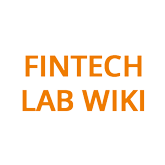Difference between revisions of "DIGITAL PLATFORMS and Supply Chains"
| Line 6: | Line 6: | ||
A nice introduction to the efficiency criteria that can be introduced in relation to supply chain operations and financial agreements, it is worth quoting the following two contributions Kikuchi et al. (2012)<ref>Kikuchi, T., Nishimura, K., Stachurski, J., & Zhang, J. (2021). Coase meets Bellman: Dynamic programming for production networks. ''Journal of Economic Theory'', ''196'', 105287.</ref> and Kim and Shin (2012)<ref>Kim, Se-Jik, and Hyun Song Shin. "Sustaining production chains through financial linkages." ''American Economic Review'' 102, no. 3 (2012): 402-406.</ref>. | A nice introduction to the efficiency criteria that can be introduced in relation to supply chain operations and financial agreements, it is worth quoting the following two contributions Kikuchi et al. (2012)<ref>Kikuchi, T., Nishimura, K., Stachurski, J., & Zhang, J. (2021). Coase meets Bellman: Dynamic programming for production networks. ''Journal of Economic Theory'', ''196'', 105287.</ref> and Kim and Shin (2012)<ref>Kim, Se-Jik, and Hyun Song Shin. "Sustaining production chains through financial linkages." ''American Economic Review'' 102, no. 3 (2012): 402-406.</ref>. | ||
| − | + | == Digital platforms to foster supply chain efficiency: examples == | |
| + | The adoption of digital platform technology to improve supply chains efficiency across multiple dimensions. Below we list a number of existing cases. We classify them in relation to the goal targeted by the creation of the digital infrastructure with no reference to their commercial or public nature at the sole purpose of illustration | ||
| + | |||
| + | === Operations general purpose === | ||
| + | https://hbr.org/2022/07/how-to-turn-a-supply-chain-platform-into-an-innovation-engine | ||
| + | |||
| + | https://blogs.microsoft.com/blog/2022/11/14/introducing-the-microsoft-supply-chain-platform-a-new-approach-to-designing-supply-chains-for-agility-automation-and-sustainability/ | ||
| + | |||
| + | === Finance === | ||
| + | https://primerevenue.com/primerevenue-platform/ | ||
| + | |||
| + | === Sustainability: GHG reduction and recycling === | ||
| + | https://www.openes.io/it | ||
| + | |||
| + | https://www.leonardo.com/it/suppliers/leap | ||
| + | |||
| + | https://core.ac.uk/download/pdf/82446537.pdf | ||
| + | |||
| + | https://afraassociation.org/ | ||
| + | |||
| + | |||
| + | == Bibliography == | ||
Revision as of 22:17, 23 August 2023
Introduction
Supply chains are specific example of a decentralized organization that may have no specific legal or technological support. It is simply defined in relation to the trade relationships between customers and suppliers that form a network where the connections are created by production and financial relationships.
There exists an extensive literature that analyzes the nature of the supply chain aggregations and a number of papers that analyze the empirical evidence deriving from the existing supply chain operations and the propagation of financial shocks across them.
A nice introduction to the efficiency criteria that can be introduced in relation to supply chain operations and financial agreements, it is worth quoting the following two contributions Kikuchi et al. (2012)[1] and Kim and Shin (2012)[2].
Digital platforms to foster supply chain efficiency: examples
The adoption of digital platform technology to improve supply chains efficiency across multiple dimensions. Below we list a number of existing cases. We classify them in relation to the goal targeted by the creation of the digital infrastructure with no reference to their commercial or public nature at the sole purpose of illustration
Operations general purpose
https://hbr.org/2022/07/how-to-turn-a-supply-chain-platform-into-an-innovation-engine
Finance
https://primerevenue.com/primerevenue-platform/
Sustainability: GHG reduction and recycling
https://www.leonardo.com/it/suppliers/leap
https://core.ac.uk/download/pdf/82446537.pdf
Bibliography
- ↑ Kikuchi, T., Nishimura, K., Stachurski, J., & Zhang, J. (2021). Coase meets Bellman: Dynamic programming for production networks. Journal of Economic Theory, 196, 105287.
- ↑ Kim, Se-Jik, and Hyun Song Shin. "Sustaining production chains through financial linkages." American Economic Review 102, no. 3 (2012): 402-406.





